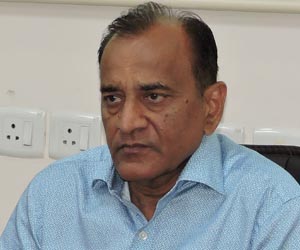The Bharatiya Janata Party’s (BJP) sweeping wins in the just concluded elections to the State Assemblies of Uttar Pradesh and Uttarakhand, have all but obliterated the humiliation the party had suffered in the Delhi and Bihar Assembly elections. In addition to the three-fourth majority it gained in the two States, the BJP arrived in style in Manipur. From zero presence in the Assembly to 21 members in a House of 60, the party has taken another important step towards expanding its hold in the North-East. A few months ago, it had wrested Assam from the Congress, and in Arunachal Pradesh it had managed to win over the Chief Minister and his team to its side, thereby formally having a BJP regime in a second north-eastern State. Having won over the support of regional parties in Manipur, the BJP now has its footprint there too.
It’s Uttar Pradesh that has provided an opportunity and a challenge for the BJP. The voters left nothing to chance, giving the party more than 300 seats out of the 403 in the House. The figures are striking, and so is the fact that this is the first time in 37 years that a party has crossed the 300-mark in the State’s Assembly. And yet, the real story lies elsewhere. The BJP has virtually decimated the two most dominant regional parties of Uttar Pradesh – the Samajwadi Party (SP) and the Bahujan Samaj Party (BSP) – in a repeat of the 2014 Lok Sabha poll. Given that both the SP and the BSP have foundations in caste considerations, it can be said with an amount of certainty that the voters have rejected the caste-based appeals of these two outfits and given their support on the plank of development which the Modi-driven BJP has promised. This is a stunning, and welcome departure from the past, where ‘caste cast the vote’. It’s also a message to the two parties to reset their electoral priorities or face similar humiliation in future.
The second element is that both the SP and the BSP had wooed the minority community in the State (read Muslims) almost as if they owed its members. And yet, in more than 100 Assembly constituencies where the Muslim population was 20 per cent and more, BJP candidates emerged victorious. This demonstrates, even if to an extent, that the minority voters are no longer shackled by religious considerations.
These are interesting developments, and they point to a new voting pattern that is emerging in Uttar Pradesh’s caste-ridden society. If this fresh template sustains, it could trigger a similar shift in electoral politics throughout the country. However, the sustainability of the ‘fresh order’ depends on the performance of the BJP-led Government which assumes power in Lucknow. The new regime must proceed, without diversions, on inclusive development, and take all communities and castes along. It has a golden opportunity to practice the politics of “New India” – in Prime Minister Narendra Modi’s words.
As with Manipur, so with Goa in the west, where too the BJP finished second behind the Congress but came first in sewing an alliance. The party moved so swiftly that within 24 hours of the election result being out, it had decided on the chief ministerial choice (pulling out Manohar Parrikar from the Union Cabinet and dispatching him as Chief Minister) and secured the support of regional parties. In both these cases, the Congress was caught napping. It’s only in Punjab that it has had reason to cheer. The party scored an emphatic victory, ousting the Shiromani Akali Dal (SAD) - BJP combine and dashing the Aam Aadmi Party’s (AAP) hopes of expanding its footprint beyond Delhi. But while the Congress can celebrate this victory, it must remember that Punjab’s verdict is not seen as a defeat for the BJP as it is considered a referendum against the SAD — the dominant player in the State. On the other hand, the battering the Congress has received in Uttar Pradesh and Uttarakhand is a clear rejection by the voters of the party’s so-called high command leadership.
The situation is now precarious for the Congress and motivating for the BJP. The Congress is shrinking in the North-East, the east, the west, the north and the south — in other words, all over the country. With Assam, Manipur and Arunachal Pradesh gone, it is left with Meghalaya and Mizoram. Along with Nagaland and Tripura, the two States vote for new Assemblies the following year. The Congress has a difficult time ahead. In Meghalaya, for example, the BJP has allies such as the National People’s Party and the United Democratic Party, and in Mizoram it will lean on the Mizo National Front. If the Congress’s primacy is being threatened in these two States, in Tripura, which the Left Front rules, it faces the prospect of being pushed aside from its second position by the BJP. Just over a year ago, the BJP surprised and shocked its rivals by its performance in the urban local body elections. For the very first time, it won in four wards and finished ahead of the Congress in most of the municipal councils.
The BJP’s attention to the politics of the North-East is driven by a ‘special purpose vehicle’, which is the North East Democratic Alliance (NEDA). It came into being about a year ago as an umbrella organisation for various non-Congress parties operating in the northeastern region. The idea was two-fold: One, to project a pro-BJP political combine as an effective alternative to the Congress; and two, to promote the aspirations and the unique identity of the North-East. It was a shrewd socio-political move and the results are beginning to show. At the helm as NEDA’s national convener is senior political leader from Assam, Himanta Biswa Sarma. He has been crisscrossing the North-East, spearheading the BJP-led drive. Sarma had dumped the Congress after being disgusted with Rahul Gandhi’s leadership and joined the BJP before Assam went to poll. Then, he played a crucial role in scripting his new party’s victory in that State; in the last few days, he had been active in seeking to establish a BJP-led regime in Manipur. His efforts have been critical in securing the support of the Naga People’s Front and the National People’s Party.
Of course, the BJP’s next big contest will be the Gujarat Assembly election, which is due to take place towards the year-end. The party has had a long, 19-year stint in Prime Minister Narendra Modi’s home State — during which Modi was himself the Chief Minister for 12 years. But Gujarat is important for other reasons too. The BJP has traditionally faced a direct contest with the Congress, and this is unlikely to change significantly in the coming election. The Congress will be hoping for the Hardik Patel factor to dent the BJP’s prospects. Hardik Patel is being backed by the Shiv Sena, which is leaving no stone unturned to embarrass its ally both at the Centre and in Maharashtra. Although, from whatever is evident for now, the self-appointed Patel leader is unlikely to pull in votes, the Congress can overstate his case in a desperate bid to derail the BJP.
Besides, the Congress is hoping to build on the recent setbacks the BJP suffered in the State’s panchayat election. From just one district panchayat in 2010, the Congress gained in 24 in the 2015 local body poll. On the other hand, the BJP’s tally went down from 30 district panchayats (out of 31) to just six. It must be said that the party responded fast to the setback, replacing Chief Minister Anandiben Patel with a new leader. Right or wrong, a perception had gained ground that Anandiben Patel had failed to galvanise the party and meet the challenge from the upstart Hardik Patel.
Of course, while the Hardik Patel factor may well be overstated in the coming State election, it does add an element to the complexity — just as the AAP’s presence will. The AAP has decided to fight the Gujarat Assembly poll. It has neither a local leader nor cadre worth the name, but then it always aims to be at least of nuisance value wherever Arvind Kejriwal decides to go. If it does contest seriously, one wonders whether it will harm the BJP or end up eating into the Congress’s votes. As for the Congress, it has a strong organisation in the State but its leadership is completely clueless on how to counter Modi’s popular mass appeal. Besides, having been out of power for nearly two decades now, the party’s State unit has begun to creak at the joints.
After the Delhi success, the AAP believed it had a national chance. Its leader Kejriwal contested the Lok Sabha election from Varanasi against Modi, and lost miserably. After that drubbing, the party did not even dream of contesting the Uttar Pradesh Assembly election this time. Instead, it invested its energy and hopes on Punjab — and to a lesser extent in Goa. It had high expectations from Punjab, given that all four of its members in the Lok Sabha have been elected from here. Every senior leader from the party, from Kejriwal down, campaigned vigorously in the State, reviling both the Akali Dal-BJP coalition and the Congress, calling them names on social media and elsewhere. But the AAP ought to have seen the writing on the wall when it failed in its bid to get Navjyot Singh Sidhu (resulting in bad blood out in the open), when its leaders were involved in controversial activities that hurt Sikh sentiments, and when it failed to project a credible local leadership. In their enthusiasm to sully the Badal name, AAP leaders forgot that the Badals were already facing anti-incumbency and perceptional issues; the real challenge was emanating from a resurgent Congress. The end result was that the voters treated the AAP and the Akali Dal almost equally — the former got only a few seats more than the SAD-BJP and vastly fewer than the Congress.
The AAP’s problem has been its over-confidence and the misplaced belief that States across the country are waiting with open arms to welcome the party. It rushed to Goa after realising that Parrikar’s absence from the State had weakened the BJP. It believed that it could, if nothing else, replace the Congress as the runner-up. The party’s central leadership messed up the campaign from the start, since it neither had credible candidates nor had it created an organisational structure. Thus, it failed to register a single victory even as the voters chose a hung House, preferring a clutch of regional outfits to the AAP. Most embarrassingly, AAP candidates lost their deposits in all but one of the seats contested by them!
But while the AAP wants to fly even before it has learned to walk, the Congress and the BJP have larger and more real battles ahead. Here, as mentioned before, the Congress is fighting with its back to the wall. Another of its fortresses is under assault — Himachal Pradesh. Voting for a new Assembly should happen by this year-end, and while it’s a small State with less significance in terms of national politics, there is a psychological factor at play for both the national parties there. A victory in Himachal Pradesh will further the BJP’s aim of Congress-mukt India (meaning, releasing State after State from Congress rule). For the Congress, any win, however small, would be a relief.
The BJP does not believe in letting the grass grow under its feet. So, it is gearing up for contests that would happen next year as well — in Karnataka, for instance. It wants to sustain the momentum of victory and euphoria of the present. The grand ceremony the party organised on Sunday at the party’s headquarters in Delhi, which the Prime Minister addressed along with the likes of Amit Shah in the presence of senior party functionaries and Ministers, is part of that action plan. Karnataka is the only south Indian State where the BJP had a Government before the Congress displaced it and the Siddaramaiah Government assumed power in 2013. Senior state leaders of the BJP had been hit by multiple allegations of corruption, and the party also faced splits and departures. But that’s the past. Veteran leader and former Chief Minister BS Yeddyurappa is back in the BJP, and the party is hoping to get its act together in the months to come. There is internal dissension still, but the fear of another loss should persuade warring factions to come together. Besides, emboldened by the Uttar Pradesh victory, the central leadership of the BJP is less likely to be accommodative to troublesome elements within the party. There are other factors too that can go in the BJP’s favour. Senior Congress leader and former Union Minister SM Krishna is expected to join the BJP soon. Although he is no longer a mass leader, he does have an urban appeal. Besides, he is from the powerful Vokkaliga community and hails from Mandya region, where the BJP has been traditionally weak.
Caste arithmetic matters in Karnataka, as much as it does in States like Uttar Pradesh and Bihar. According to a recent survey conducted by a national daily, more than 40 per cent of respondents polled, said caste considerations were more important than the credentials of the candidates in the fray. Education appears to have done little to change this mindset. The survey informed that 47 per cent of respondents with post-graduate qualifications admitted to being influenced by caste in their voting preference. Similarly, those with higher incomes (between one lakh rupees and Rs 10 lakh annually) believed in caste-based voting more than those who earned lesser (Rs 25,000-Rs 50,000 annually). Given this reality, the Vokkaliga (and the Lingayat) factor becomes critical. The Congress faces a challenge as it does not have the full support of either of these groups — or of the Dalits, for that matter.
This should, on paper, make the BJP’s task easier. But it is not so. There is the ‘X’ factor, which is the Janata Dal – Secular (JD(S)), led by former Prime Minister HD Deve Gowda. Formed 17 years ago, it has done business with both the Congress and the BJP, and has an important presence in the State. Of the 222 Assembly seats that went to vote in 2013, the JD(S) won 40. Its leader HD Kumaraswamy served as Chief Minister for some 20 months between 2006 and 2007. It has a base among the Other Backward Classes. The BJP, thus, has to battle the JD(S) alongside the Congress, always keeping in mind that when it comes to the crunch, the JD(S) is more likely to back the Congress. What is going in the BJP’s favour is that there is a tremendous amount of resentment among the people against the Siddaramaiah regime. Also, the BJP’s surge across the country could influence the voters of Karnataka as well.
If the Modi-Amit Shah combine gets Karnataka back into the BJP’s kitty, it will then be emboldened to dream bigger in southern India. In Tamil Nadu, for example. The AIADMK is in a shambles after the death of J Jayalalithaa. The party stands divided between the VK Sasikala and the O Panneerselvam factions. To queer the pitch further, there are claimants for the late leader’s political legacy from Jayalalithaa’s family members. The BJP has a real chance to position itself as a credible alternative to the rival DMK if the AIDMK splinters or loses a few elections along the way. By no stretch of imagination can the BJP hope to form a Government there tomorrow, but the groundwork can begin for the near future. All it needs is to attract some high-profile names to its fold to give it the initial push. From all accounts, work is in progress there.
Kerala is another State the BJP is seriously working on. It has reason to feel upbeat by the progress so far in a State which has since independence been either with the Left Front or with the Congress. In 2011, the party’s vote share in the Assembly election was a mere six per cent; it shot up to over 15 per cent in 2016. By contrast, the Congress vote share, which was 26.4 per cent in 2011, slipped to 23.7 per cent in 2016. There had been a clear consolidation of votes in the Hindu heartlands of the State, with the impact of its rise being felt more by the Congress-led from than the Left-led combine. While the Left’s share of votes rose in the 2016 poll as compared to the 2014 Lok Sabha election, that of the Congress fell dramatically — from 31 per cent to some 24 per cent.
This will not be good news for the Congress. Senior party leader and former Union Minister AK Antony had warned his State leaders against neglecting the majority community in their pursuit of the minority and the ‘secular’ votes. His caution went unheeded; in many Hindu-dominated segments, the majority community voted for the BJP and effectively caused the Congress’s defeat. The BJP may have won just one seat but it ruined the Congress’s prospects. The voters were also upset that, even as the Left continued to physically target its workers and those of the Sangh parivar in general, the Congress remained mute and didn’t speak out in favour of the victims of the majority community.
In sum, the victory in Uttar Pradesh can lead to even more monumental changes in the nation’s political demographics and, more immediately, impact the 2019 Lok Sabha election. A few opposition party leaders have already thrown in the towel, dolefully saying that the non-BJP opposition might as well forget 2019 and think of 2024!
(The writer is Opinion Editor of The Pioneer, senior political commentator and public affairs analyst)











Post new comment